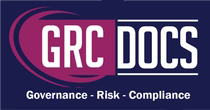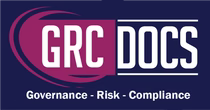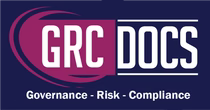EU AI Act Annex XII: Transparency Information Referred To In Article 53(1), Point (b) - Technical Documentation For Providers Of General-Purpose AI Models To Downstream Providers That Integrate The Model Into Their AI System
Introduction
The EU AI Act serves as a comprehensive regulatory framework designed to manage the ethical use of AI technologies within the European Union. This legislation aims to balance innovation with the protection of fundamental rights, ensuring that the development and deployment of AI systems do not infringe on privacy or lead to discrimination. For organizations operating within the EU or collaborating with EU-based stakeholders, understanding the intricacies of this Act is not just beneficial—it's essential. Compliance with these regulations can help organizations avoid legal pitfalls and enhance their reputation as responsible AI developers. Moreover, the Act's emphasis on transparency and accountability reflects broader societal expectations.

Steps To Create Effective Technical Documentation
Creating effective technical documentation requires a structured approach. This process involves several key steps, each designed to ensure that the documentation is comprehensive, accessible, and aligned with regulatory standards.
1. Define The Scope and Purpose- Clearly outline the scope of the AI model and its intended use cases. This involves specifying the functionalities of the model and the contexts in which it is expected to operate. By defining the scope, providers can ensure that the documentation is relevant and targeted, catering to the needs of both technical and non-technical stakeholders. It's important to identify the target audience for the documentation, as this will influence the level of detail and the type of language used. Additionally, defining the purpose of the documentation helps in setting expectations and objectives. It clarifies the role of the documentation in supporting compliance, risk management, and stakeholder communication. By establishing a clear purpose, organizations can ensure that the documentation remains focused and aligned with their broader AI governance strategies.
2. Describe the Model Architecture- Provide a detailed description of the AI model's architecture, including its components, algorithms, and data flows. This section should offer a comprehensive overview of how the model functions, using diagrams and flowcharts to enhance understanding. Visual aids can be particularly helpful in conveying complex technical concepts to non-technical stakeholders, facilitating better comprehension and
3. Document Data Processing Methods- Explain how data is collected, processed, and used by the AI model. This includes outlining data sources, preprocessing techniques, and any data transformations applied. Providing a comprehensive overview of data processing methods is essential for ensuring transparency and accountability, as it allows stakeholders to understand how data is utilized and any potential biases that may arise. Additionally, documenting data processing methods is crucial for regulatory compliance. By maintaining detailed records of data handling practices, organizations can demonstrate their adherence to data protection regulations and ethical guidelines. This not only helps in mitigating legal risks but also reinforces the organization's commitment to responsible AI practices.
4. Outline Risk Management Procedures- Identify potential risks associated with the AI model and outline the measures taken to mitigate them. This includes bias detection, error handling, and security protocols. By proactively addressing potential risks, organizations can enhance the reliability and trustworthiness of their AI systems, ensuring that they operate safely and effectively in various contexts. Furthermore, outlining risk management procedures is critical for regulatory compliance. By demonstrating a proactive approach to risk management, organizations can showcase their commitment to transparency and accountability, aligning with the principles of the EU AI Act. This not only helps in building trust with stakeholders but also enhances the organization's reputation as a responsible AI developer.
5. Highlight Limitations and Assumptions- Be transparent about the limitations of the AI model and any assumptions made during its development. This helps set realistic expectations for downstream providers, ensuring that they understand the model's capabilities and constraints. By acknowledging limitations, organizations can foster trust and credibility, as stakeholders appreciate honesty and transparency in AI development. Highlighting assumptions is also important for transparency and accountability. By clarifying any assumptions made during the model's development, organizations can provide a more accurate picture of the model's functionality and potential limitations. This level of transparency is essential for building trust with downstream providers and other stakeholders, ensuring that AI systems are used responsibly and ethically.
Key Requirements of Annex XII
Annex XII lists what information must be shared with downstream providers. The goal is to empower them to assess risks, ensure safety, and maintain compliance when integrating GPAI models into their own AI systems.
Below is a breakdown of what the transparency package must include:
General Model Information
-
Model identification: Name, version, release date, and provider details.
-
Model purpose and functionality: Description of what the model does, what it was trained to achieve, and its potential use cases.
-
Architecture and size: Basic technical specifications such as architecture type (e.g., transformer, diffusion), modality, and parameter count.
-
Intended use and limitations: Clear instructions on the model’s intended uses, prohibited uses, and performance boundaries.
-
Licensing terms and acceptable-use policy: Conditions under which downstream providers can access, modify, or redistribute the model.
Training and Evaluation Overview
-
Training data overview: General description of datasets used — their types, sources, and curation methods (without disclosing trade secrets or personal data).
-
Evaluation methodology: How the model’s performance was assessed, including key benchmarks or metrics.
-
Known limitations and biases: Information about potential biases, error rates, or edge cases where the model may behave unpredictably.
-
Energy and compute disclosure: Estimated compute and energy resources used to train the model (to promote sustainability transparency).
Risk and Safety Information
-
Risk areas: Potential misuse scenarios and high-risk applications that should be avoided.
-
Mitigation measures: Recommended technical or organizational safeguards (e.g., human oversight, fine-tuning methods, or alignment strategies).
-
Red-teaming and testing: Summary of stress tests, adversarial testing, or vulnerability assessments performed before release.
-
Security recommendations: Guidance on secure deployment, model access control, and data protection practices.
Integration Guidance For Downstream Providers
-
API or integration documentation: Instructions for interfacing the model (e.g., endpoints, dependencies, hardware requirements).
-
Performance metrics and limitations: Expected accuracy, response times, latency, and potential degradation scenarios.
-
Best practices for deployment: Recommendations for monitoring, auditing, and retraining the model after integration.
-
Ethical and compliance guidance: Notes on legal restrictions under the EU AI Act (e.g., when the integrated system might become “high-risk”).
How GPAI Providers Can Comply?
To meet the requirements of Annex XII, GPAI providers should implement the following best practices:
-
Create a Transparency Summary Document– Prepare a user-facing summary with all information listed above, formatted for technical and non-technical audiences.
-
Use Versioned Documentation– Maintain changelogs that track updates, retraining, or fine-tuning events that could affect model performance or compliance.
-
Adopt Standard Formats (JSON / Markdown / Web Portals)– Make transparency information machine-readable to support automated compliance checks by downstream providers.
-
Integrate with Developer Platforms– Include transparency documentation directly in model cards, GitHub repositories, or API documentation.
-
Provide Risk-Mitigation Guidelines– Offer actionable safety recommendations and prohibited-use examples (especially for high-impact models).
-
Ensure Accessibility – Make documentation easily accessible online without requiring complex approvals — regulators emphasize open availability.
Conclusion
Annex XII of the EU AI Act cements transparency as a cornerstone of AI governance. By requiring GPAI providers to share critical technical and risk information with downstream developers, it ensures that AI integration happens responsibly and safely. In an age where large AI models power everything from chatbots to healthcare tools, this Annex bridges the gap between innovation and accountability — empowering developers to build ethically aligned, compliant, and trustworthy AI systems. As the AI Act comes into force, transparency will no longer be optional — it will be the foundation of every AI partnership in Europe and beyond.




